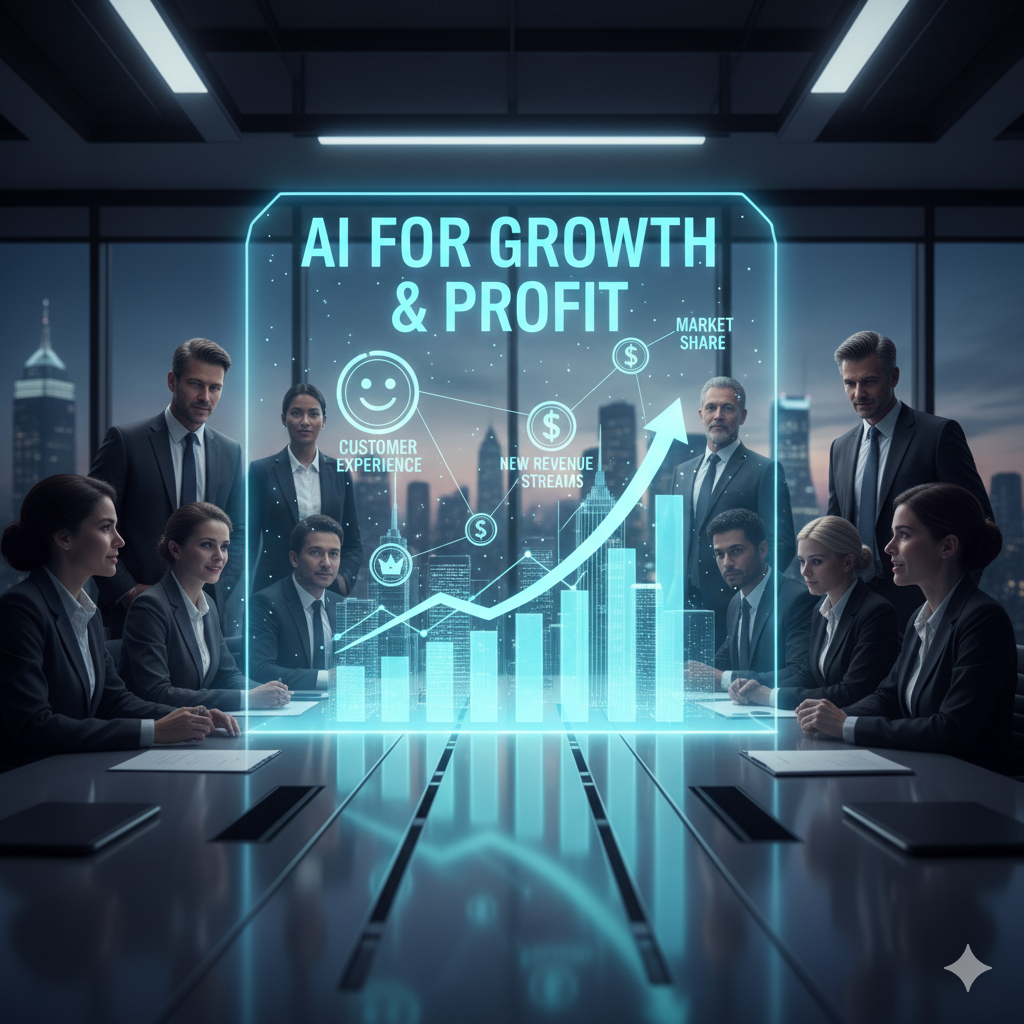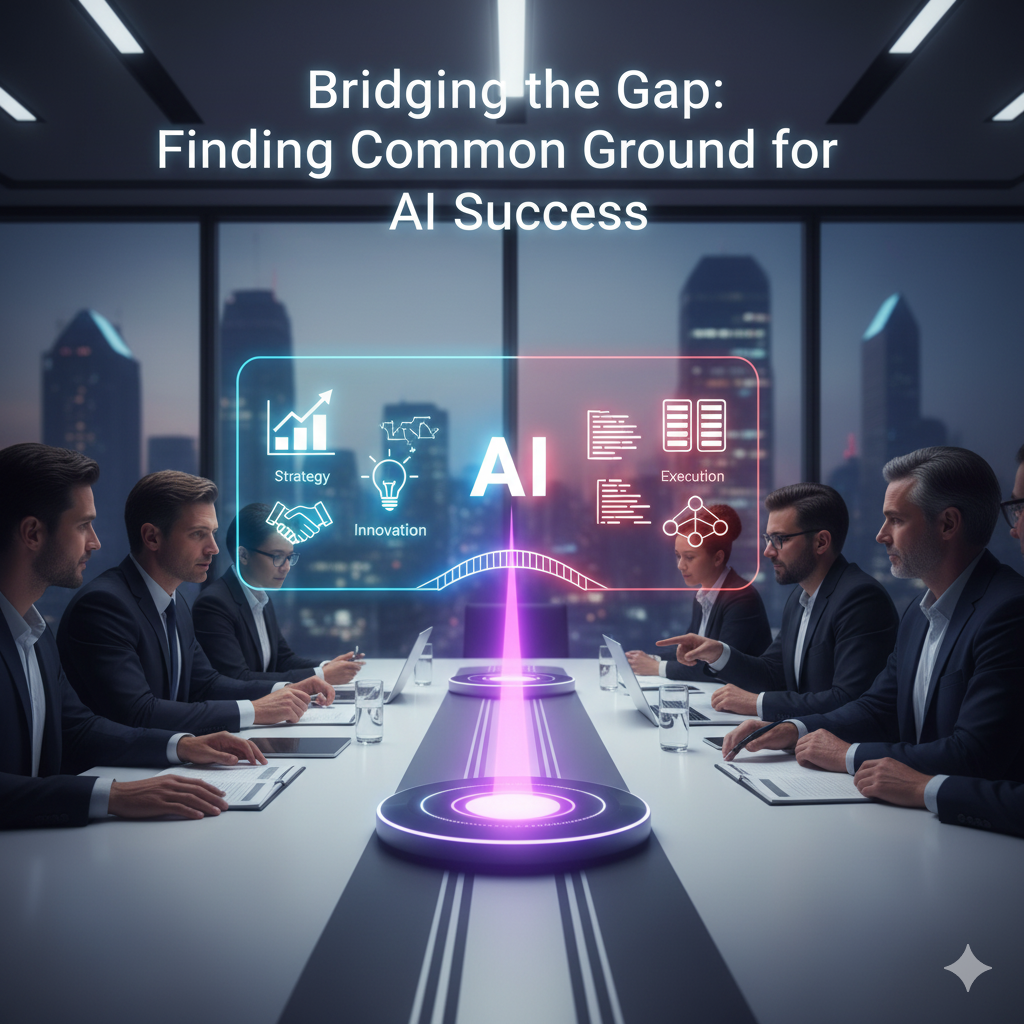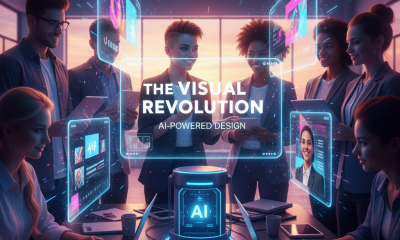Job Search Strategy
Ai : The C-Suite vs IT: Aligning AI Transformation Goals
Published
4 months agoon
By
Kaneez Fizza
The C-Suite vs. The IT Department: Different Perspectives on AI Transformation
Navigating a major business change can be tricky, right? Have you ever noticed how different departments view the same project through completely different lenses? This divide is never more apparent than during an AI transformation. After all, the C-Suite and the IT Department often have very different goals. I’ve seen this play out in countless organizations. Initially, the C-Suite gets excited about the big-picture value of AI, while the IT team is focused on the nitty-gritty details of implementation. However, this disconnect can cause major friction, leading to communication breakdowns, stalled projects, and wasted resources. It’s a classic case of the dreamers versus the doers, and bridging that gap to foster a shared vision is crucial for success.

C-Suite Envisions AI for Growth and Profit in the Boardroom.
Do you ever wonder what keeps a CEO up at night? Ultimately, it’s not the server uptime; it’s market share, revenue growth, and shareholder value. Therefore, when they look at Artificial Intelligence, they see a tool to achieve those goals. For instance, they envision Artificial Intelligence transforming customer experiences, creating new revenue streams, or gaining a competitive edge.
I remember a CEO who wanted to use Artificial Intelligence to personalize every customer interaction. Consequently, he saw a clear path to a 20% increase in sales. Nevertheless, he didn’t care about the specific algorithm or the data pipeline; he was focused on the business outcome. In other words, he was dreaming big, as he should be.
He saw Artificial intelligence not just as a technology, but as a strategic asset. His vision was to use Artificial Intelligence to anticipate customer needs, optimize pricing in real-time, and create a level of personalization that competitors couldn’t match. He was motivated by the potential for a massive return on investment.
Beyond the Tech: The Business Case for AI
For the C-Suite, the core question isn’t “what is AI?” but “what can Artificial Intelligence do for our business?” They’re looking for measurable results. They want to know how a specific Artificial Intelligence initiative will impact the bottom line, improve efficiency, or drive competitive advantage.
My experience has shown that a successful Artificial Intelligence pitch to the C-Suite must speak their language. You must move past the technical jargon and focus on a clear, compelling business case. For example, instead of discussing “machine learning models,” you can talk about “predictive analytics that reduce supply chain costs.”
The ROI-Driven Mindset
The C-Suite’s perspective is almost entirely focused on return on investment (ROI). They view Artificial Intelligence as a capital expenditure that must generate a significant return. Therefore, any proposed AI project needs to have a solid financial model behind it.

The ROI-driven Mindset: AI guides Strategic Financial Decisions.
I’ve seen the most successful AI projects get approved because they were tied to a clear and quantifiable business metric. For instance, a company that used Artificial intelligence to optimize its marketing spend was able to show a direct correlation between the Artificial Intelligence system and a 15% increase in lead conversion, which justified the initial investment. This ROI-driven mindset is what ultimately fuels AI adoption from the top down.
The IT Department’s Challenge: The Reality of AI Implementation
Do you know what keeps the CIO up at night? Conversely, it’s data security, system integration, and scalability. Hence, when they hear about a new AI initiative, they think about the technical debt, the infrastructure upgrades, and the skill sets required to pull it off. Furthermore, they are the ones who have to build the rocket ship, not just imagine what it would be like to fly to Mars.
I once worked with an IT team that was handed a massive AI project with a tight deadline. Subsequently, they felt overwhelmed because they lacked the necessary talent and resources. For example, the team had expertise in legacy systems, but not in machine learning or data science. Eventually, they had to push back on the timeline, which created tension with the executive team. After all, in IT, if you don’t break something, you’re not trying hard enough—or you’re not using enough Artificial Intelligence.
Their primary concern was practicality. They worried about how the new Artificial Intelligence system would integrate with their existing software, where the data would be stored securely, and what would happen if the system failed. They saw AI as a complex, resource-intensive puzzle that needed to be solved piece by piece.
Bridging the Gap: Finding Common Ground for AI Success
How can you get these two sides to work together seamlessly? Therefore, the key is communication and a shared understanding of the project’s goals. In fact, it’s not about making one side capitulate to the other; it’s about finding a middle ground where strategy meets execution. Ultimately, this is where true transformation happens.
I’ve seen a lot of projects fail because the C-Suite saw Artificial Intelligence as a magic bullet and the IT department saw it as an impossible puzzle. Consequently, the solution was to create a cross-functional team with a clear mission. Moreover, the team included members from both business and IT, so they could speak the same language. As a result, they could align on a phased approach that delivered business value at each step.

Bridging the gap for AI success: Strategy meets execution.
This collaborative approach ensures that the Artificial intelligence solution is not only technically feasible but also directly supports a clear business objective. It allows the IT team to feel ownership of the business outcomes, while the C-Suite gains a deeper understanding of the technical complexities involved.
The Power of a Shared Language
Ever tried to explain a complex business strategy to a technical expert, or a technical architecture to a business leader? It can feel like you’re speaking two different languages. Therefore, a crucial step in bridging the gap is to establish a shared vocabulary and understanding.
I’ve found that using simple, non-technical terms to explain AI concepts is incredibly effective. For instance, instead of talking about “machine learning model training,” we can talk about “teaching the system to recognize patterns to improve customer service.” This makes the technology more relatable to the C-Suite. Conversely, it’s important for business leaders to understand the constraints and realities of the IT infrastructure.
Aligning on a Phased Approach
One of the biggest sources of friction is the “all-or-nothing” approach to Artificial Intelligence projects. The C-Suite wants a complete, revolutionary solution, while IT knows that a big bang approach is a recipe for disaster.
I’ve had success with a phased, incremental strategy. First, we identify a small, high-impact problem that Artificial Intelligence can solve, like automating a single report or improving a specific part of the sales funnel. Subsequently, we build a pilot program, measure its success, and then scale it. This approach provides quick wins for the C-Suite, builds confidence, and allows the IT team to learn and adapt without being overwhelmed. Ultimately, this iterative process turns a massive undertaking into a series of manageable, successful projects.
The Human Element: Why AI Needs the Right People
Have you ever heard the saying, “It’s not the tool; it’s the craftsman?” Likewise, this is especially true for AI. Indeed, the most sophisticated AI model is useless without the right talent to design, implement, and manage it. Therefore, the biggest challenge in Artificial intelligence transformation isn’t technical; it’s human.
I worked with a company that had a solid Artificial intelligence strategy but couldn’t execute it. Specifically, they had a great plan to use AI for predictive maintenance, but their IT team lacked the expertise. Furthermore, they tried to hire, but the market for Artificial intelligence talent was incredibly competitive. As a result, the project stalled, and they lost valuable time and money. In other words, the right person for the job is often a hard AI to find!
This is where we come in. However, we don’t just help you find talent; we are a reverse recruiting company. Therefore, we focus on connecting you with the exact kind of Artificial Intelligence professional you need, from data scientists to machine learning engineers, who can bridge the gap between your C-Suite’s vision and your IT department’s capabilities. Ultimately, we don’t wait for candidates to come to us; we proactively seek out the talent that fits your unique needs and culture. For example, if your IT team is brilliant but lacks a specific AI skill set, we can find that exact person who is the perfect puzzle piece. We take the burden of the talent search off your shoulders.

AI success hinges on the right human talent and collaboration
Our process is simple yet effective. First, we take the time to deeply understand your company’s strategic goals and technical requirements. Then, we use our extensive network and targeted search methods to identify and engage with top-tier Artificial Intelligence professionals who possess the skills you need. Finally, we present you with a curated list of candidates who are not just qualified on paper but are also a strong cultural fit. Consequently, this eliminates the guesswork from hiring and significantly shortens your time-to-hire.
Don’t let the differing perspectives of your C-Suite and IT department derail your Artificial Intelligence ambitions. Conversely, a truly successful AI transformation requires both visionary leadership and expert execution. In short, our mission is to ensure you have the human capital to bring that vision to life. Contact us today to learn how we can help you find the perfect AI professional to facilitate a seamless and successful transformation. Sign up today to learn more about our Candidate-Side Recruiting services and how we can help you achieve your career goals. Our team of experienced recruiters is dedicated to providing personalized support and guidance every step of the way. Don’t just look for a job – let us help you find your dream job. Schedule a free consultation to discuss your career goals and explore how Candidate-Side Recruiting can work for you. Take the first step towards a more fulfilling career!


